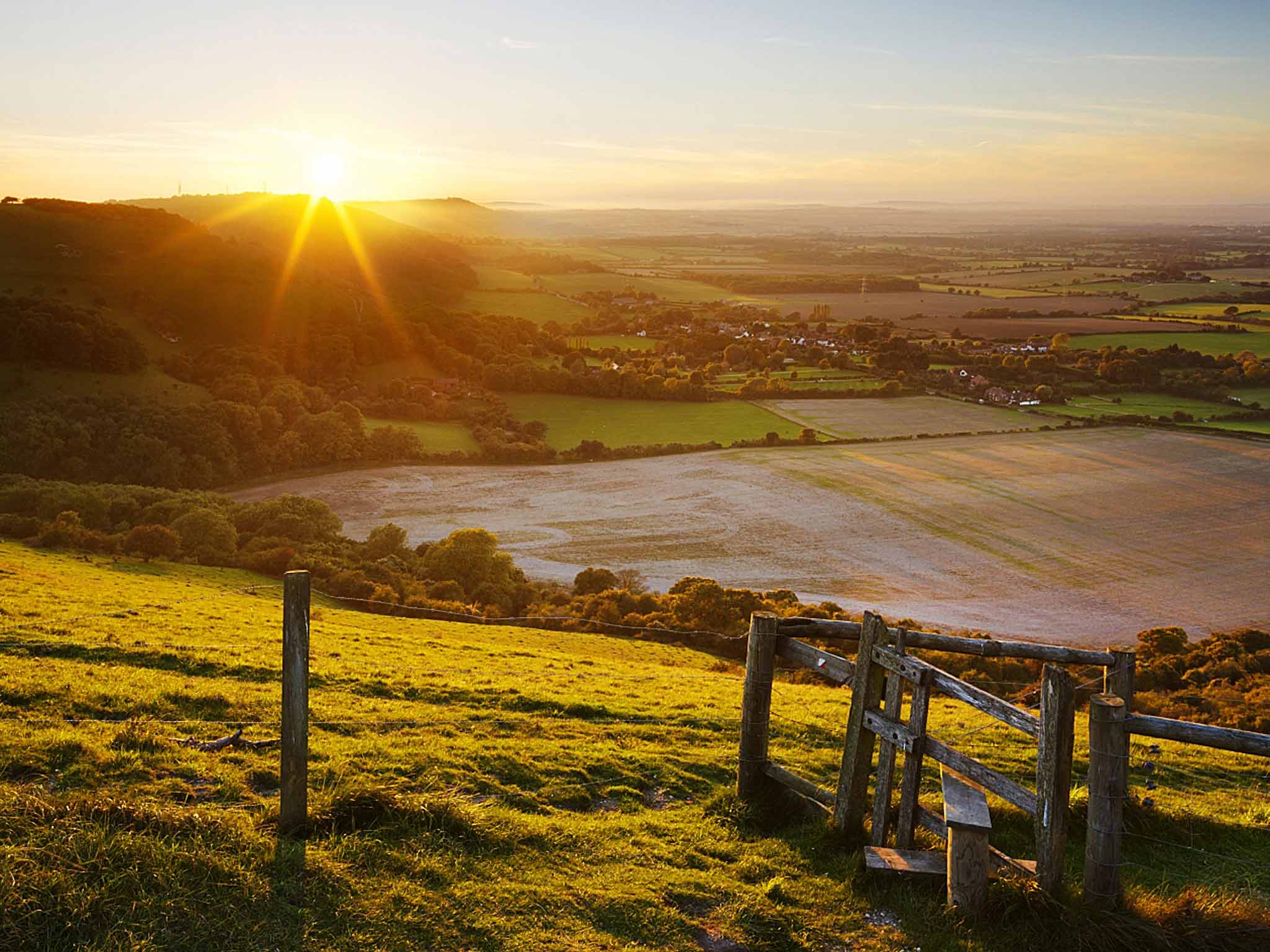Autumn’s subtle charm is greatly enhanced by this Indian summer
It might have been too late to hear any birdsongs, but my trip to Dorset was ripe with natural beauty

Your support helps us to tell the story
From reproductive rights to climate change to Big Tech, The Independent is on the ground when the story is developing. Whether it's investigating the financials of Elon Musk's pro-Trump PAC or producing our latest documentary, 'The A Word', which shines a light on the American women fighting for reproductive rights, we know how important it is to parse out the facts from the messaging.
At such a critical moment in US history, we need reporters on the ground. Your donation allows us to keep sending journalists to speak to both sides of the story.
The Independent is trusted by Americans across the entire political spectrum. And unlike many other quality news outlets, we choose not to lock Americans out of our reporting and analysis with paywalls. We believe quality journalism should be available to everyone, paid for by those who can afford it.
Your support makes all the difference.Last week will naturally be remembered as the week of the Scottish independence referendum; history books will not record the weather. But in southern England last Friday, when the result was declared, it was yet another exquisite day in the Indian summer we have been enjoying.
After a damp start, it was a faultless early-autumn afternoon of stillness and soft warm sunshine with a misty tinge, and I will remember it not only for the historic vote in Scotland, and the news that Britain was not going to break up after all, but also because I went into the countryside to look closely at what the Indian summer meant in the natural world.
I went to wildlife-rich west Dorset, accompanying a group of naturalists, as my enthusiasm for nature is unfortunately not matched by my expertise; I was blessed to be in the company of three real experts who could tell me precisely what I was looking at – Bob Gibbons, the well-known wildlife photographer and botanist; the naturalist and author Peter Marren; and Paul Toynton, the former nature reserve warden on Salisbury Plain.
Tony Bates, President of the Dorset Wildlife Trust, was our host on two of the trust’s most stunning nature reserves, Kingcombe Meadows and nearby Powerstock Common. The first has some of the best remaining wildflower meadows in Britain (97 per cent of them have been lost) and the second is a mixture of ancient woodland and grassland especially noted for its butterflies.
There’s no doubt that the best time to visit both is late spring or early summer, when the wildflowers are sensational, the butterflies abundant, and the birds singing their hearts out, so I was curious to see the picture the reserves presented at the onset of autumn.
The most immediately notable phenomenon was an absence: no birdsong, apart from that of robins (who were singing in many places.) But the rest of it was much more subtle: that was its fascination and its charm. For example, there were plenty of familiar autumn fruits, blackberries, rose hips, sloes, but also unfamiliar things such as the glossy purple dewberries, which I wouldn’t have known but which my companions drew to my attention.
Ever tasted dewberries? Sharper on the tongue than blackberries. Quite delicious. Their juice flows readily and is as red as blood.
In edible terms, there were also late summer herbs in flower – sweet marjoram, water mint, and common calamint, sometimes called wild basil; Peter Marren gave me a leaf of common sorrel to chew, tangy and juicy, and also a leaf of water pepper (which was duly peppery), and was delighted to inform me that there was a closely related plant called tasteless water pepper (which wasn’t).
The autumn wildflowers were similarly on the subtle side: some of them had to be pointed out to me. Fleabane and Devil’s-bit scabious I knew, but the yellow flowers I thought were dandelions were either common cat’s ear or autumn hawkbit; what I thought was ragged robin turned out to be the rayed form of knapweed; and as for the gorse, which seemed surprisingly late to be in bloom – “Ah, that’s western gorse, see, Ulex gallii, not your common gorse, Ulex europaeus,” I was informed.
The single most fascinating thing they showed me among the plants was a robin’s pincushion – a gall, or abnormal growth, on the stems of wild roses, caused by a tiny wasp: like a fiery-red ball of tangled string, it was once prominently used in folk medicine.
The warm, windless weather meant that less familiar invertebrates were also very visible: the four-spotted orb spider, catching a daddy longlegs; a harvestman, a spider relative, scurrying through the grass; a long-winged conehead (one of the bush crickets) perched on Bob Gibbons’ hand. The pond on Powerstock Common was buzzing with dragonflies such as common darters, which are small and red, and southern hawkers, which are large and blue and green.
It was a great privilege to delve into these two matchless stretches of unspoiled countryside, in two ways: first, to be with expert naturalists who brought it alive, and second, to see it at such an exquisite time.
We don’t have an Indian summer every year, and the pleasure of it was memorably enhanced by watching it closely in the natural world – indeed, by watching the natural world go about its business quite oblivious of the great events taking place in the political world, 400 miles to the north.
Join our commenting forum
Join thought-provoking conversations, follow other Independent readers and see their replies
Comments